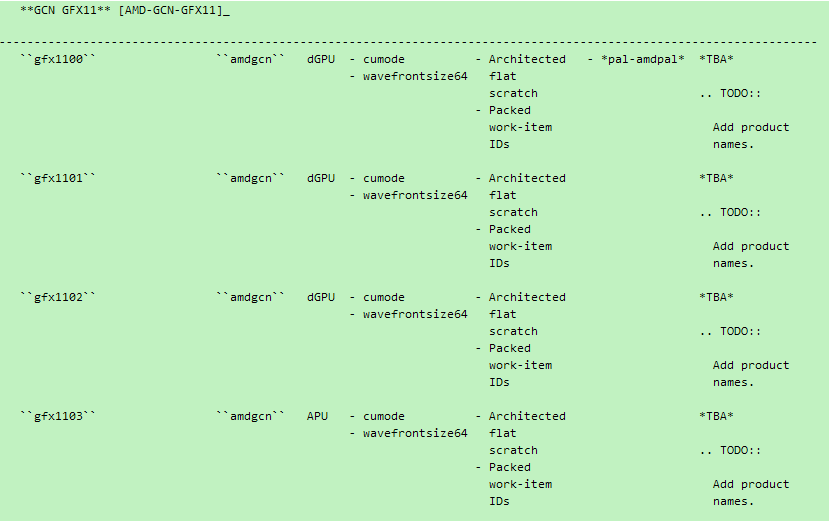AMD Begins Driver Enablement for Radeon RX 7000 'RDNA 3' GPUs
AMD's RDNA 3 ready for driver enablement in Linux.
AMD has begun to enable Linux driver support for its next-generation graphics processors based on the RDNA 3 architecture. As AMD's next-gen Radeon RX 7000-series graphics cards are expected to be introduced in the fall, the company is likely starting to test its new GPUs with partners, beginning to enable Linux driver support, and doing other prep work..
Formally, the new series of Linux patches (discovered by @Kepler_L2) enables driver support for some of AMD's SoC21 and derivative GPUs IP blocks (e.g., PCIe bus, interrupt handler, system management unit I/O, and PCI BAR). The very same patches formally enable support of AMD's GFX11 architecture, which is believed to be RDNA 3 (as GFX10 stands for RDNA2). For now, AMD's GFX11 family formally has four members — three discrete graphics processors and one integrated — though we would expect more GPUs to use the new architecture eventually.

It is possible that SoC21 is AMD's next-generation top-of-the-range codenamed Navi 31 GPU that supports all the features of RDNA 3 along with the most advanced memory controller, display interfaces and other features.
One noteworthy tidbit about AMD's Navi 30-series graphics processors enablement in Linux is the fact that AMD no longer adds support of a particular chip by releasing a large patch (so not to share secrets with its rivals and market observers), but rather adds support for individual IP blocks of its GPUs by making individual IP-related patches available, notes Phoronix. This approach also makes it easier for AMD to clear its legal/technical review procedures.
GPUs based on the same architecture tend to share building blocks, so enabling support of individual IP blocks essentially enables driver support of multiple graphics processors at once. Meanwhile, since one GPU may have a block that another GPU does not have (e.g., one GPU comes with an HDMI 2.1 48G support, whereas another continues to feature HDMI 18G albeit with some HDMI 2.1 features), a block-by-block enablement does not reveal which of the chips has which block.
Stay On the Cutting Edge: Get the Tom's Hardware Newsletter
Get Tom's Hardware's best news and in-depth reviews, straight to your inbox.

Anton Shilov is a contributing writer at Tom’s Hardware. Over the past couple of decades, he has covered everything from CPUs and GPUs to supercomputers and from modern process technologies and latest fab tools to high-tech industry trends.